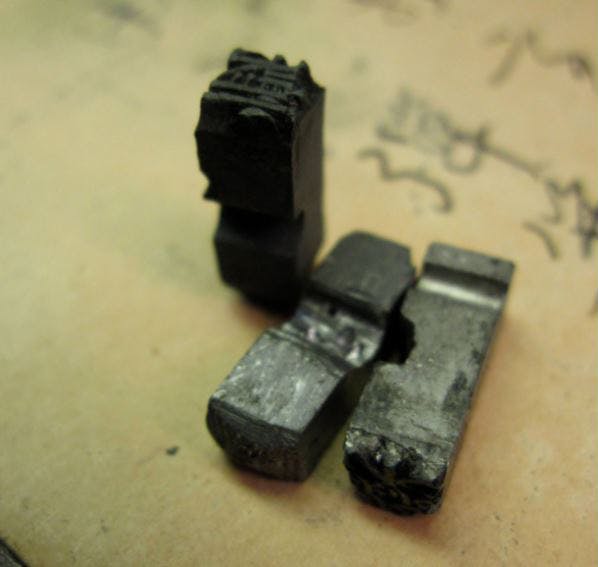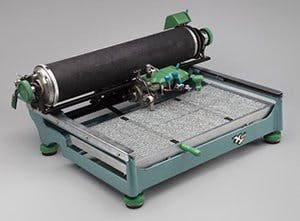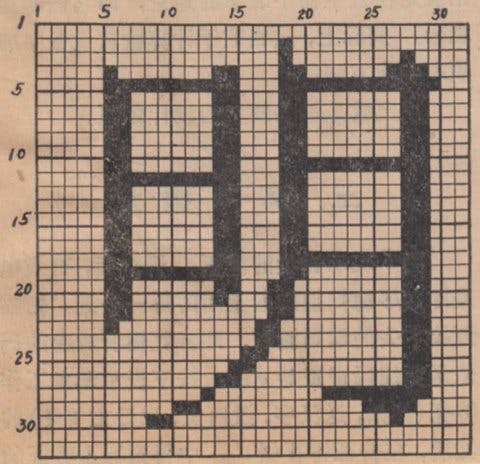Stanford Libraries receives a remarkable East Asian information technology collection

The Thomas S. Mullaney East Asian Information Technology History Collection is thought to be the only one of its kind in the world and will soon be accessible in Stanford’s Special Collections in conjunction with the Silicon Valley Archives.
Assembled over the course of 15 years of research and teaching, the Thomas S. Mullaney East Asian Information Technology History Collection is one of a kind and will greatly deepen Stanford’s holdings. The collection is multi-faceted and multi-dimensional, containing rare machines alongside archival and printed documents.

“I did not realize that I had become a collector until about halfway through the process,” Stanford Professor of History Thomas S. Mullaney recalled. “I began by buying a few items from used bookstores for my research. Others were donated to me by people trying to find a home for their antiques. Only after my collection had grown did it dawn on me how rare and fragile these materials were. They needed a permanent home.”
Mullaney donated more than 2000 items, along with a detailed bibliography and high-resolution scans. Dating from the turn of the twentieth century to the present age of computing, the collection has strong Chinese holdings and additional materials from other East Asian countries. It documents the modern history of Chinese and East Asian telegraph codes, typewriters, printing, mimeographs, word processors, computers, and a host of other information technologies.

“We intend to invest modestly and selectively to build upon the collection by expanding its Japanese holdings and establishing a Korean section,” said Michael A. Keller, vice provost and the Ida M. Green University Librarian at Stanford. “Professor Mullaney will be an advisor to these expansions.”
Mullaney has always wanted to share his unique collection with the world. He curated a traveling exhibition, Radical Machines: Chinese in the Information Age, which traveled to San Diego, New York, and San Francisco—"the first exhibition in history to be dedicated to modern Chinese information technology,” Mullaney told the Los Angeles Review of Books.
Within the collection, Mullaney also found numerous connections to Stanford, including Chinese-language user manuals for PCs manufactured by Cromemco, a company founded by two Stanford students and named after their dorm: Crothers Memorial Hall.

“This collection greatly broadens the scope and modernity of Asian collections at Stanford,” said Jidong Yang, head of Stanford’s East Asia Library. Overseeing the acquisition of supplemental materials to the Mullaney Collection is Dr. Regan Murphy Kao, head of the East Asia Library’s Special Collections and curator for Japanese collections. Murphy Kao will collaborate with Korean Studies Librarian Kyungmi Chun.
Mullaney’s award-winning books include Coming to Terms with the Nation: Ethnic Classification in Modern China (UC Press, 2010) and The Chinese Typewriter: A History (MIT Press, 2017), the first full-length history in any language of China’s development of a modern, nonalphabetic information infrastructure encompassing telegraphy, typewriting, word processing, and computing.
In 2019, Mullaney edited The Chinese Deathscape: Grave Reform in Modern China, a digital interactive scholarly project based at Stanford University Press, mapping more than ten million corpses that have been exhumed and reburied across the Chinese landscape and the transformation of China’s graveyards into sites of acute personal, social, political, and economic contestation. His newest edited volume, Your Computer Is on Fire (MIT Press, 2021), questions the narratives of technological utopianism and neutrality by exposing the inequality, marginalization, and biases woven into technological systems.
“When I began to explore the options for institutional placement of the collection, I found that most Asia-focused museums focus primarily on art,” said Mullaney. “Meanwhile, science and technology museums mainly focus on Western technologies. And in general, most libraries I spoke with didn’t want my 3D objects, while museums didn’t want the paper!”
All of this changed when he received an email from University Librarian Michael Keller—“an enthusiastic, charming response from Stanford Libraries,” Mullaney called it, “that conveyed genuine interest, the curatorial capacity to handle CJK (Chinese, Japanese, Korean) collections, and the archival expertise to manage both paper and objects.” Although Stanford Libraries may have seemed an obvious choice for his collection, Mullaney was intent on not favoring his home institution throughout his search process.

Mullaney and Stanford Libraries have partnered on many endeavors, including the launch of the Massively Multiplayer Humanities program, which included archival material and frequent visits to Special Collections as part of the classes syllabus. “I suppose that is why I use ‘we’ and ‘us’ whenever speaking about Stanford Libraries,” said Mullaney.
According to Keller, the Thomas S. Mullaney East Asian Information Technology History Collection will serve well to broaden the definition and deepen the history of information technology. “It has obvious parallels to the Silicon Valley Archives and practical applications for teaching and exhibition in Hohbach Hall, opening next year in the renovated east wing of Green Library,” said Keller who worked on the collection’s transfer with Mullaney. “Circumstantially, the Mullaney Collection is a tribute to the late Cecil H. Green himself, a founder of Texas Instruments.”
The Mullaney Collection is currently being processed and is not yet accessible. Interest in the collection should be directed to the East Asia Library.